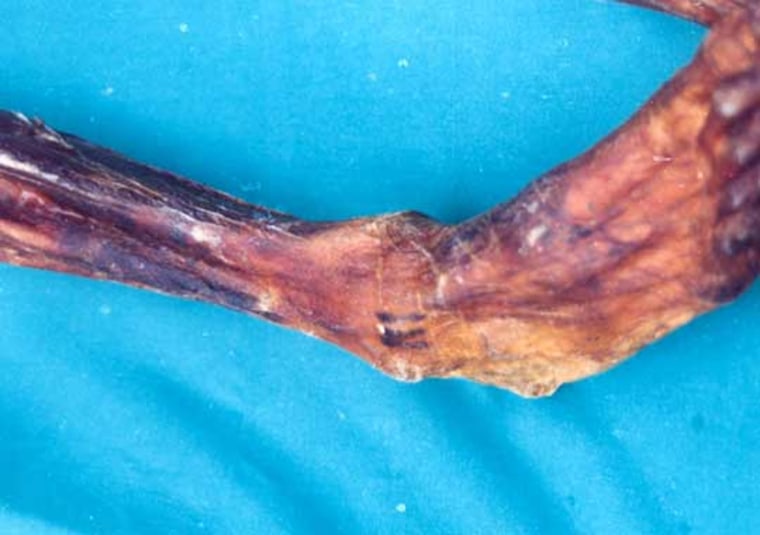The 57 tattoos sported by Oetzi, the 5300-year-old Tyrolean iceman mummy, were made from fireplace soot that contained glittering, colorful precious stone crystals, according to an upcoming study in the Journal of Archaeological Science.
The determination supports prior research that the tattoos were associated with acupuncture treatments for chronic ailments suffered by the iceman, whose frozen body was found remarkably well preserved in the Similaun Glacier of the Alps in 1991.
The findings also suggest how prehistoric people were tattooed in the days before commercial inks and electric tattooing machines.
"I can imagine that they used some pointed material, maybe thorns, and dipped it into the soot and then pierced into the skin, or made scars and put the soot into the wound after insertion, allowing the wound to heal so that the colored material stayed there," lead author Maria Anna Pabst told Discovery News.
Using optical microscopy and various powerful electron microscopy techniques, Pabst, a professor in the Institute of Cell Biology at the Medical University of Graz, and her colleagues analyzed several of Otzi's tattoos. Tattoos chosen for this study consist of line markings, as well as a distinctive cross-shaped tattoo on the iceman's right knee.
Magnification of the skin designs revealed the tattoos consisted of soot, likely raked out of a fireplace, along with different silicate crystals, such as quartz and almandine, a type of purple garnet.
"As there are only a few tiny crystals between the soot particles, I think that when the ancients took the soot from the stones of the fireplace, they got some crystals," Pabst said, explaining that the crystals likely were just naturally in either the dirt or the fireplace structure itself, and not intentionally added for their sparkle, color and value.
"The tattoos have a dark blue color, deriving from the soot," she added. "There are groups of one, two, three, four and seven tattoo lines parallel to the longitudinal axis of the body, and so they're parallel to Chinese acupuncture meridians."
The cross-shaped tattoo on his knee, and another one on his left ankle, also lay over Chinese acupuncture "trigger points," the researchers believe. Strengthening their argument is the fact that the soot-made markings are located on parts of the iceman's body not typical for tattoo displays, diminishing the notion that they served a more ornamental, aesthetic function.
Prior research shows Oetzi did suffer from a variety of ailments that might have benefited from acupuncture. These included a bad back, degeneration of the hip, knee and ankle, and "severe abdominal disorders," primarily caused by whip worm, an intestinal parasite that can cause diarrhea.
Before the more recent studies on this mummy, historians believed the earliest acupuncture took place in China around 3,000 years ago. Since the iceman is much older, Pabst and her colleagues now think this therapeutic technique may have been independently discovered by many different prehistoric European and Asian cultures.
It's also still possible that tattooing and acupuncture originated in East Asia, with the knowledge of this practice spreading to the Alps region well before the iceman's lifetime.
Frank Bahr, president of the German Academy of Acupuncture, first made the tattoo-acupuncture connection on the iceman after studying a drawing of the tattoos and their placement on Oetzi's body.
Bahr told Discovery News, "The most interesting thing about the whole iceman story is that even today I would treat a patient with about 90 percent of the same points as the tattoos on the iceman, if this patient were to have the same diseases."
